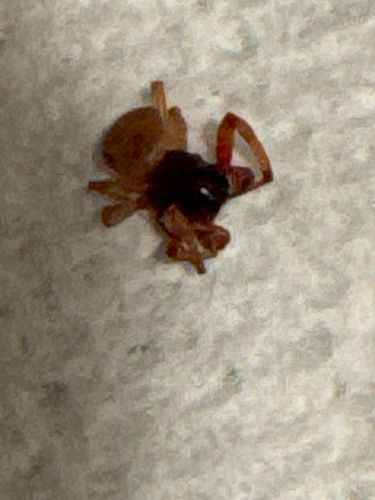Ground Spider (likely a Corinnidae or Gnaphosidae species based on appearance, though specific identification is challenging from the image)
Scientific Name: Difficult to determine exact scientific name from the image due to the condition of the specimen and the vast number of species in these families. Examples of genera include Scotophaeus (Gnaphosidae) or Castianeira (Corinnidae).
Order & Family: Order: Araneae (Spiders), Family: Gnaphosidae (Ground Sac Spiders) or Corinnidae (Corinnid Sac Spiders). The image shows characteristics common to both, such as the robust cephalothorax and legs, and the general dark coloration.
Size: Generally small to medium-sized, ranging from 3 mm to 15 mm in body length, depending on the specific species.

Natural Habitat
Typically found on the ground level, under rocks, logs, leaf litter, debris, or in cracks and crevices. Many species can also be found indoors, especially in basements or ground-floor rooms, seeking shelter or searching for prey.
Diet & Feeding
Mainly other small insects and arthropods, acting as predators. They are generalist hunters.
Behavior Patterns
Ground spiders are typically nocturnal hunters, actively searching for prey rather than building webs to catch it. They are fast runners and rely on their speed to ambush victims. Some species are known to build silk retreats or sacs under rocks, logs, or in leaf litter where they rest during the day or lay eggs. Males often undertake a 'wandering' phase to find mates. The specimen in the image appears to be deceased or severely damaged, so no living behavior can be observed.
Risks & Benefits
Potential risks are generally low. Bites are rare and typically result in only localized pain, redness, and swelling, similar to a bee sting. They are not considered medically significant. The primary benefit is their role as natural pest control, preying on various household and garden insects.
Identified on: 8/20/2025